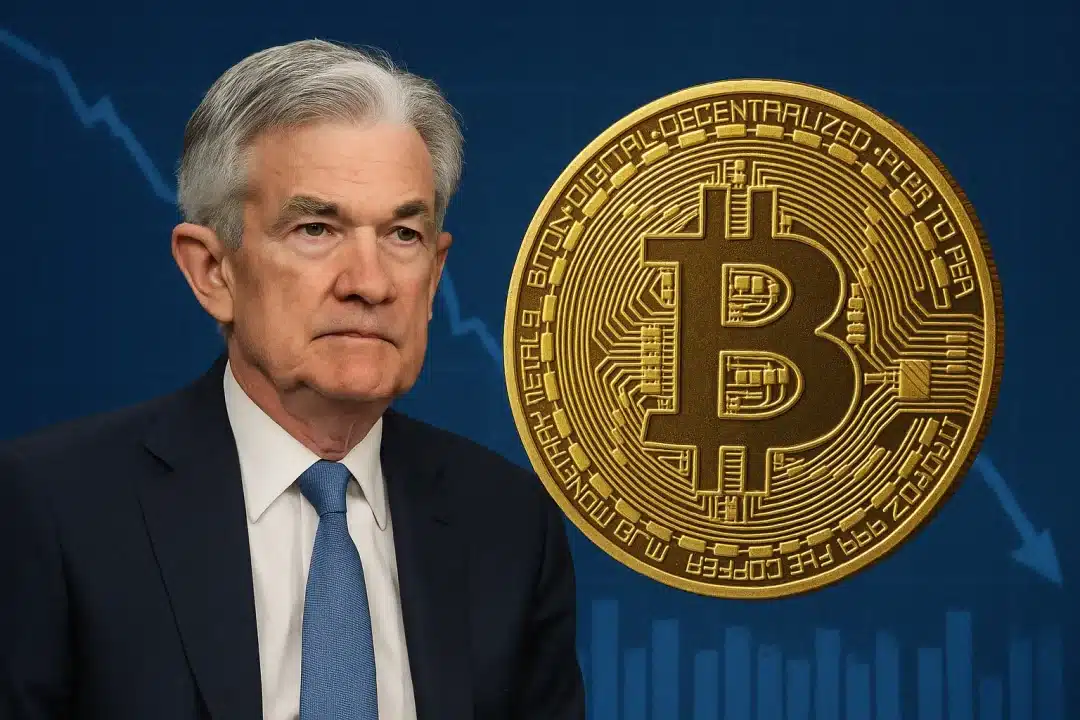What Happens to Bitcoin When the Fed Cuts Interest Rates?
April 21, 2025

As Bitcoin continues to trend upward in early-week trading, a growing chorus of investors is turning its attention to the U.S. Federal Reserve and the possibility of interest rate cuts this summer. The relationship between monetary policy and crypto market performance is once again front and center—raising the question: What happens to Bitcoin when the Fed cuts rates?
📉 The Fed’s Dilemma: Inflation, Growth, and Market Expectations
The Federal Reserve held interest rates steady in March 2025, but minutes from the latest FOMC meeting reveal mounting concern about slowing economic growth, persistent labor softness, and stagnating inflation. Markets now anticipate a rate cut as early as June—potentially opening the door for risk assets like Bitcoin to rally.
Historically, rate cuts tend to lower yields across traditional investments such as bonds and savings accounts. That dynamic pushes investors toward riskier, high-growth assets—including cryptocurrencies.
“Bitcoin is positioned as a macro hedge, and when real interest rates decline, its appeal grows,” said Meltem Demirors, Chief Strategy Officer at CoinShares.
📈 Why Bitcoin Typically Rises When Interest Rates Fall
Here’s how rate cuts tend to benefit Bitcoin:
- Lower opportunity cost: As returns on U.S. Treasuries and savings accounts fall, Bitcoin becomes a more attractive alternative.
- Weaker dollar: Rate cuts usually put downward pressure on the U.S. dollar, increasing the value of dollar-denominated assets like BTC.
- Liquidity injection: Easing monetary policy increases market liquidity—fueling demand for volatile assets like crypto.
In fact, following previous rate cut cycles—especially during the COVID-19 pandemic—Bitcoin experienced significant price appreciation, topping $60,000 by March 2021.
🏦 Institutional Eyes on the Fed—and Bitcoin
Institutional investors, many of whom entered the Bitcoin space following the launch of spot ETFs in January 2024, are especially sensitive to macroeconomic signals. A dovish pivot by the Fed could unlock another wave of large-scale allocations to crypto.
Recent price movement reflects this anticipation. As of Monday morning, Bitcoin is trading around $84,000, up more than 7% over the past week, buoyed by expectations of rate relief and broader economic stimulus.
“If the Fed cuts this summer, Bitcoin could easily retest all-time highs before Q4,” said Michael Safai, co-founder of crypto trading firm Dexterity Capital.
🧐 But It’s Not Always That Simple
Despite historical patterns, analysts caution that the relationship between Fed policy and Bitcoin isn’t always linear.
- If rate cuts signal a recession, risk appetite could shrink—hurting Bitcoin.
- A surprise cut might be seen as panic by the Fed, triggering volatility rather than bullish momentum.
- Meanwhile, regulatory pressures and global macro events can outweigh Fed policy in shaping crypto’s path.
🔮 What to Watch Next
Bitcoin (BTC) traders are now eyeing two key dates:
- April 26: Release of the Fed’s preferred inflation gauge, the PCE index.
- June 12: Next FOMC rate decision.
Both could serve as catalysts for major Bitcoin moves. Until then, investors are likely to continue pricing in a dovish pivot.
Search
RECENT PRESS RELEASES
Related Post




